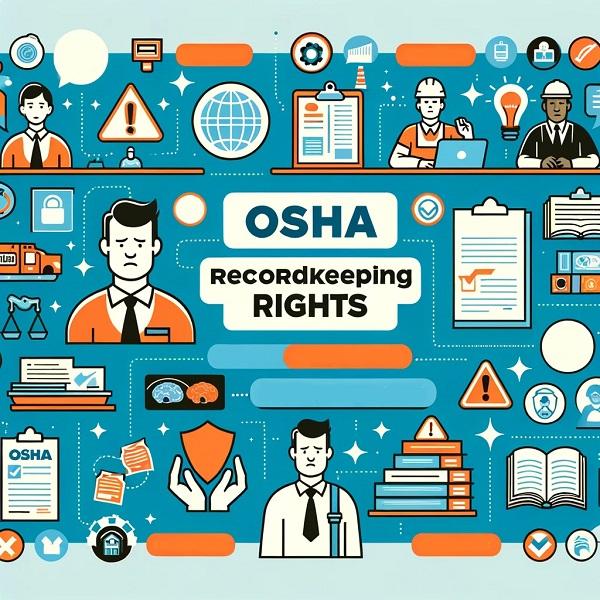

OSHA, the Occupational Safety and Health Administration, is a federal agency that sets and enforces standards to ensure safe and healthy working conditions. One important aspect of OSHA regulations is recordkeeping, which is designed to track workplace injuries and illnesses. Understanding OSHA recordkeeping rights is essential for both employers and employees to ensure compliance and protect the health and safety of workers. In this comprehensive article, we will explore the intricacies of OSHA recordkeeping rights, including key concepts, background information, practical examples, and tips to navigate this important aspect of workplace safety.
Key Concepts and Terms
Before delving into the details of OSHA recordkeeping rights, it’s important to understand key concepts and terms associated with this topic. OSHA’s recordkeeping regulations are primarily outlined in Standard Number 1904, which provides guidelines for recording and reporting occupational injuries and illnesses. The recordkeeping process involves documenting work-related injuries and illnesses, maintaining records of these incidents, and reporting them to OSHA when required.
Background Information and Context
The OSHA recordkeeping regulations aim to provide a comprehensive and accurate picture of workplace safety and health. By recording and reporting injuries and illnesses, employers and OSHA can identify trends, assess hazards, and implement preventive measures to improve workplace safety. This data also helps OSHA evaluate the effectiveness of its standards and regulations, leading to continuous improvement in occupational safety and health practices.
Employers’ Responsibilities
Employers have the primary responsibility for maintaining OSHA recordkeeping. They must keep records of all work-related injuries and illnesses, including minor injuries and near-miss incidents, and ensure that these records are accurate and up-to-date. Employers are also required to provide OSHA forms for recording injuries and illnesses, such as Form 300 (Log of Work-Related Injuries and Illnesses), Form 301 (Injury and Illness Incident Report), and Form 300A (Summary of Work-Related Injuries and Illnesses).
Employees’ Rights
While employers bear the primary responsibility for recordkeeping, employees also have rights related to OSHA recordkeeping. One of the key rights is the right to access injury and illness records. Employees have the right to review and receive a copy of their workplace injury and illness records, including OSHA forms and incident reports. This transparency allows employees to stay informed about their own health and safety in the workplace.
In addition to accessing their own records, employees have the right to report work-related injuries and illnesses without fear of retaliation. OSHA prohibits employers from discriminating against employees for reporting injuries or illnesses, filing complaints, or participating in OSHA inspections. This protection encourages employees to report workplace hazards and injuries, contributing to a safer work environment for everyone.
Different Perspectives and Approaches
While OSHA recordkeeping is a crucial aspect of workplace safety, different industries and workplaces may have unique challenges and considerations when it comes to compliance. For example, industries with high rates of occupational hazards, such as construction or manufacturing, may face more complex recordkeeping requirements compared to office-based environments. Understanding these industry-specific nuances is essential for employers and employees to effectively navigate OSHA recordkeeping regulations.
Practical Examples and Case Studies
Consider a construction company where employees are exposed to various hazards on the job site. In this scenario, accurate and thorough recordkeeping becomes even more critical to track and address workplace injuries and illnesses. By implementing a robust recordkeeping system, the construction company can identify recurring hazards, take corrective actions, and prioritize the safety of its workers.
In contrast, a corporate office may have different types of workplace injuries and illnesses, such as ergonomic-related issues or stress-related conditions. In this setting, recordkeeping should capture these unique concerns and enable the employer to implement preventive measures tailored to the office environment.
Common Questions and Misconceptions
One common misconception about OSHA recordkeeping is that only severe injuries or illnesses need to be recorded. In reality, OSHA requires employers to record all work-related injuries and illnesses that result in medical treatment beyond first aid, days away from work, restricted work activity, or medical evaluation. Understanding these criteria is essential for accurate and comprehensive recordkeeping.
Another common question pertains to the retention period for OSHA records. OSHA requires employers to retain injury and illness records for a specific duration, typically five years. This retention period ensures that historical data is available for analysis and trend identification, even for incidents that occurred several years ago.
Useful Tips and Advice
For employers, investing in training and education on OSHA recordkeeping requirements is crucial to ensure compliance and accuracy in recordkeeping. This includes training employees responsible for recordkeeping, such as safety officers or human resources personnel, on how to properly complete OSHA forms and maintain records.
Employees can benefit from familiarizing themselves with OSHA recordkeeping rights and understanding how to access their injury and illness records. By being informed about their rights, employees can actively participate in maintaining a safe and healthy work environment and contribute to the overall effectiveness of OSHA recordkeeping.
Summary and Final Thoughts
In conclusion, OSHA recordkeeping rights are vital for maintaining workplace safety and health. Employers and employees play essential roles in ensuring compliance with recordkeeping regulations and fostering a culture of transparency and accountability in reporting workplace injuries and illnesses. By understanding their rights and responsibilities, both employers and employees can contribute to a safer and healthier work environment. OSHA recordkeeping not only fulfills regulatory requirements but also serves as a proactive tool for identifying and addressing workplace hazards, ultimately promoting the well-being of the workforce.